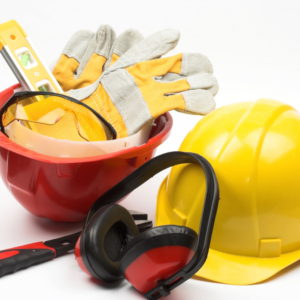Safety gloves are one of the most essential personal protective equipment (PPE) items in any workplace. Whether on construction sites, in chemical laboratories, logistics, or mechanical processing, choosing the right gloves protects your hands and improves efficiency and comfort. This guide provides an in-depth analysis of various glove materials, functions, and applications to help you select the most suitable gloves for your needs.
1. Types of Safety Gloves by Material
1.1 Leather Gloves
Features:
-
Highly abrasion-resistant, ideal for handling and mechanical work.
-
Good breathability but limited water resistance.
-
Flexible and provides a good grip on tools.
Applications:
Construction, welding, heavy material handling, machinery operation.
Pros and Cons:
-
Pros: Durable, abrasion-resistant, excellent grip
-
Cons: Poor chemical resistance, affected by water and oils
1.2 Nitrile Gloves
Features:
-
Made of synthetic rubber, resistant to oils and chemicals.
-
High elasticity, fits the hand closely, and allows flexibility.
-
Available as disposable or reusable gloves.
Applications:
Laboratories, chemical handling, oil-based work, precision assembly.
Pros and Cons:
-
Pros: Oil and chemical resistant, latex-free (no allergy risk)
-
Cons: Moderate breathability; may feel hot for long-term use
1.3 Latex Gloves
Features:
-
Extremely elastic, fits the hand closely for dexterity.
-
Primarily for single-use protection.
-
Limited chemical protection but good barrier against bacteria and viruses.
Applications:
Medical, laboratory, cleaning, food handling.
Pros and Cons:
-
Pros: Comfortable, flexible, effective against microorganisms
-
Cons: Latex allergy risk, limited chemical and oil resistance
1.4 PVC Gloves
Features:
-
Resistant to acids, alkalis, and chemicals.
-
Waterproof and oil-resistant.
-
Thick and durable but less flexible.
Applications:
Chemical plants, petrochemical, electroplating, cleaning operations.
Pros and Cons:
-
Pros: Chemical-resistant, waterproof, long-lasting
-
Cons: Less flexible, may feel bulky
1.5 Cotton/Fabric Gloves
Features:
-
Excellent breathability and comfort, suitable for light-duty tasks.
-
Limited abrasion and puncture resistance.
-
Can be combined with rubber or PVC coatings for enhanced protection.
Applications:
Warehousing, gardening, light assembly.
Pros and Cons:
-
Pros: Comfortable, breathable, cost-effective
-
Cons: Limited protection, less durable
1.6 High-Performance Cut-Resistant Gloves
Features:
-
Made of Kevlar, stainless steel fibers, or ultra-high-molecular-weight polyethylene (HPPE).
-
Excellent cut and puncture resistance.
-
Ideal for handling sharp objects like glass or metal.
Applications:
Metal processing, glass handling, food cutting operations.
Pros and Cons:
-
Pros: Exceptional cut resistance
-
Cons: Higher cost, comfort varies by material
2. Safety Gloves by Function
-
Chemical-Resistant Gloves: Protect against acids, alkalis, and solvents; usually nitrile or PVC.
-
Cut-Resistant Gloves: Handle sharp objects safely; often Kevlar or HPPE.
-
Abrasion-Resistant Gloves: For heavy-duty handling and machinery; leather or coated fabric.
-
Electrical Insulation Gloves: Protect against electric shocks; made from rubber.
-
Heat-Resistant Gloves: For welding, casting, or high-temperature operations; materials include heat-resistant leather or aramid fibers.
3. Practical Tips for Choosing Safety Gloves
-
Match Material to Work Environment: Nitrile or PVC for chemicals, cut-resistant for sharp metals.
-
Consider Comfort and Flexibility: Gloves too thick or non-breathable reduce efficiency.
-
Check Fit and Size: Too large may slip; too small restricts circulation.
-
Evaluate Durability and Lifespan: Disposable vs reusable gloves depend on task duration.
-
Look for Special Features: Water resistance, oil resistance, anti-static, heat resistance as needed.
4. Conclusion
Safety gloves are more than tools—they are the first line of defense in workplace safety. Understanding materials and functions helps you select gloves that protect hands, improve work efficiency, and extend glove life.
We provide not only safety gloves but also protection and peace of mind. Choosing the right gloves is the best safeguard for yourself and your team.


